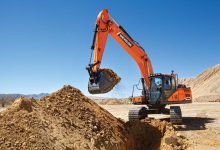
Key Takeaways
- Crawlers are crucial in modern construction due to their robustness and versatility.
- Advancements in technology have significantly improved crawler efficiency and usability.
- Understanding the different types of crawlers can help you select the right one for specific construction needs.
The Role of Crawlers in Modern Construction
Crawlers are indispensable in today’s construction landscape. From large-scale infrastructure projects to smaller, intricate builds, these machines offer unmatched stability and strength. They can operate on various terrains, making them versatile and essential for any construction site. Whether you are looking for a bulldozer for sale or planning an extensive construction project, a crawler is a reliable choice to meet diverse operational demands. Their widespread utility stems from their capacity to endure harsh conditions and provide consistent performance, so they are often the backbone of many construction projects.
For instance, a crawler’s ability to navigate rough terrain and heavy loads makes it an ideal choice for projects such as earthmoving and excavation. Their durable tracks allow them to maintain stability and traction where wheeled machinery might falter, making them invaluable for challenging construction environments. This reliability ensures that crawlers can handle the substantial physical demands commonly associated with large construction sites. They also play a vital role in reducing the time and labor needed for complex tasks, thereby increasing overall productivity. The ability of crawlers to offer precision and control under harsh conditions contributes significantly to the efficiency and speed of project completion.
Different Types of Crawlers
Understanding the different types of crawlers can streamline project planning and execution. Generally, crawlers can be categorized into two main types:
- Hydraulic Crawlers: Known for their precision and control, they are often used in tasks requiring fine-tuned movements. These crawlers provide superior maneuverability and accuracy, making them suitable for detailed work such as demolition and site preparation. Hydraulic systems allow for smoother operation, reducing the wear and tear on machinery components. Hydraulic crawlers can be tailored to fit specific job requirements, and their flexible operational capabilities make them a versatile tool on any construction site.
- Electric Crawlers are gaining popularity due to their lower environmental impact and operational cost. They are ideal for urban building projects with tight emission requirements. Electric crawlers offer quieter operation, beneficial in residential or densely populated areas. They also contain fewer moving components, which reduces maintenance requirements and extends machine life. The shift towards electric machinery reflects the industry’s broader commitment to sustainability and reducing carbon footprints. Electric crawlers balance performance and environmental responsibility, making them a forward-thinking choice for future construction needs.
Recent Advancements in Crawler Technology
Technology has dramatically altered the efficiency and capabilities of modern crawlers. Features like GPS tracking, automated controls, and enhanced fuel efficiency are commonplace. These advancements improve operational efficiency and boost safety on construction sites. For instance, GPS tracking can help managers monitor crawler locations in real time, optimizing workflow and reducing downtime. Real-time tracking facilitates better coordination among the workforce, ensuring that resources are utilized effectively.
Moreover, the integration of cutting-edge sensors and telematics offers real-time data, helping construction managers make informed decisions swiftly. Such innovations significantly save time, reduce operational costs, and increase project accuracy. Advanced telematics systems can diagnose potential mechanical issues before they become critical, preventing unexpected equipment failures and costly repairs. Furthermore, automated controls and semi-autonomous features enhance the precision of crawler operations while reducing the need for manual intervention, which leads to safer and faster project completions. The ongoing technological evolution in crawler machinery signifies a future where construction processes are more streamlined, efficient, and safer.
Choosing the Right Crawler for Your Project
Selecting a suitable crawler requires a clear understanding of your project’s needs. Terrain, load capacity, and specific tasks should guide your choice. More extensive projects might need a high-capacity hydraulic crawler, whereas smaller projects could benefit from an eco-friendly electric crawler. Careful evaluation of these criteria guarantees that the machinery selected performs optimally, increasing project efficiency.
Consulting with experts and reviewing case studies can also provide valuable insights. For example, the criteria for choosing the right crawler excavator can vary significantly based on the project’s specific needs and constraints. Engaging with professionals with extensive experience in the field can help you customize your machinery choices to align perfectly with your project’s demands. Reviewing past case studies can highlight potential challenges and solutions, providing a roadmap for successful project completion. Such informed decisions can enhance the efficiency of current projects and set precedents for better project management in the future.
Tips for Maintenance and Longevity
Consistent upkeep is essential for prolonging the durability of your crawlers. Key practices include:
- Consistent lubrication of moving parts ensures that components operate smoothly, reducing friction and preventing premature wear and tear. Regular lubrication can also prevent overheating parts, which is vital for maintaining operational efficiency.
- Timely replacement of worn-out tracks helps maintain optimal performance and prevents damage to other mechanical parts. Investing in high-quality replacement tracks can enhance the longevity and efficiency of your crawler. Regular track inspections can detect early signs of wear and allow for timely interventions.
- Regular inspection of hydraulic systems can identify leaks or weaknesses early, allowing for prompt repairs that prevent significant breakdowns. Advanced diagnostic tools can streamline these inspections, ensuring comprehensive checks are performed efficiently. Keeping the hydraulic system in top condition can also improve the machine’s overall performance and fuel efficiency.
- Adhering to the manufacturer’s maintenance guidelines preserves the machinery’s integrity and guarantees it operates within its designed parameters. These guidelines can maximize uptime and reduce the risk of unexpected failures, contributing to smoother project execution. Manufacturer guidelines often include detailed maintenance schedules, tips for troubleshooting common issues, and recommendations for part replacements, which are crucial for maintaining peak performance.
By taking these measures, you can guarantee that your crawler will be efficient and dependable throughout its operating life. Proactive maintenance extends the crawler’s lifespan and enhances its resale value, providing a better return on investment when upgrading to newer models. Furthermore, a well-maintained machine operates more efficiently, consuming less fuel and reducing operational costs. A disciplined maintenance routine minimizes downtime, ensuring projects stay on schedule and within budget. The long-term benefits of regular maintenance include sustained machinery performance, safety, and overall cost savings for construction companies.


